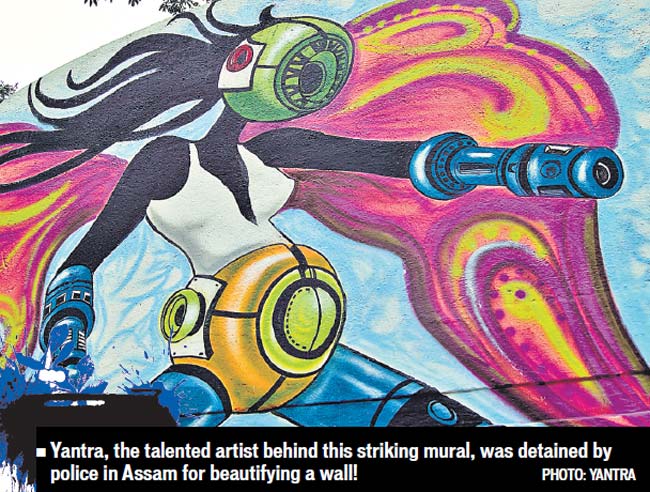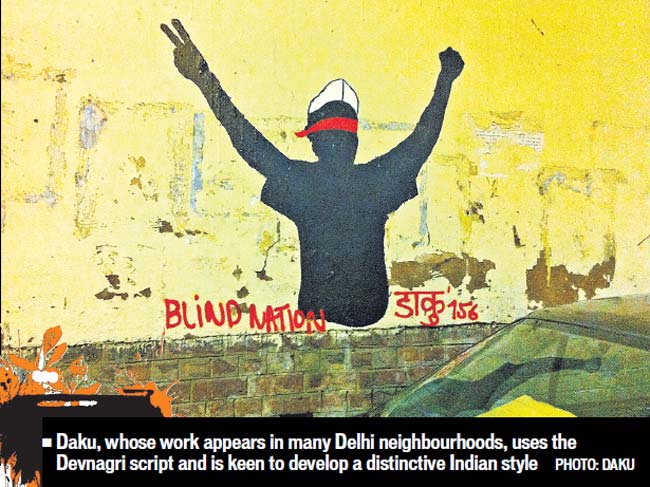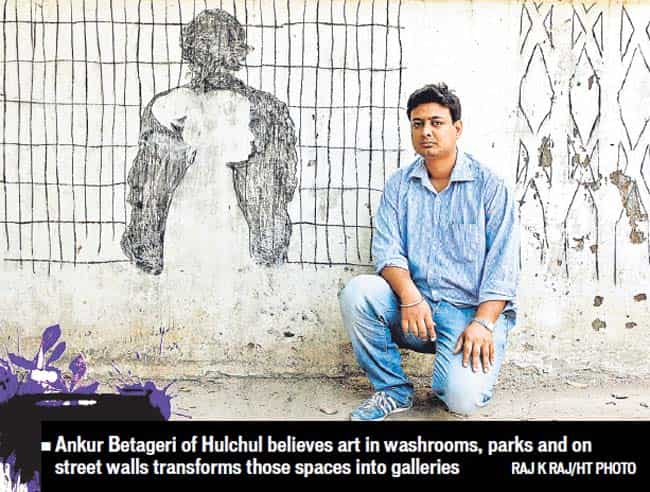The new walls of fame
Street beat: Young artists are transforming city walls across the country with graffiti and street art that’s aesthetic while also being socially and politically conscious. Srishti Jha reports.
A new breed of Indian artist is reaching out to the masses by exhibiting art in unorthodox public spaces — this, despite numerous official hurdles. Indian street art, has, in recent years, been developing in scope and relevance with groups like Hulchul and Bind Boys and graffiti artists like Daku, Yantra, and Zine taking art away from galleries and museums and splashing it onto city walls.


Formed in March 2012, Hulchul is a five-member team whose first venture on March 2 was a public art exhibition near Mandi House. The project involved executing a variety of artworks on the DMRC construction walls, a move opposed by the guards and workers in the area. The aim, Hulchul reveals, was to reclaim space meant for the public and to reinstitute art as a revolutionary and political medium. The group has put up graffiti at Rabindra Bhawan, Delhi University and JNU, paying particular attention to washrooms and parking spaces. "The idea was to recreate a sense of wonder among the masses. Art has to enter everyday life," says Ankur Betageri, founder of Hulchul. "In 1917, Marcel Duchamp placed a urinal inside an art gallery to shake up the inanity and pretensions of the art world. In 2012, we go to a washroom, a park, or a street wall and put up or paint works of art and declare the space a gallery," he adds.

Blind Boys, formed in 2009, put up a photo exhibition in the circles of Connaught Place and Lodhi Garden where artists displayed their work. After similarly successful ventures in Bengaluru and Mumbai, they intend to have a pop-up exhibition in Delhi which involves converting unused spaces like vacant shops or corners of Shahpur Jat village into art spaces. “People do notice such initiatives and feel a part of it. We get a good audience,” says Akshay, who is a founding member of Blind Boys.
"Street art is a good medium to say what you are not supposed to say, to object to what you are not supposed to object to," says sociologist Kamalini Mukherjee who believes both the legal and illegal versions of the art are significant ways for individuals to express political and social beliefs.
While Banksy in the UK and Lady Pink in New York City have become cult figures, Indian street artists like Daku, Yantr and Zine are striving to get there. Daku, who has been active since 2008, is a member of international graffiti artists’ collective 156. His work peppers walls across Okhla, Malviya Nagar, Hauz Khas Village and Chirag Delhi, with an LPG rocket recently making an appearance in Saket. He uses the Devnagri script and aims to create a distinctive Indian style.
"Initially, people were afraid but now street art in emerging as a trend in India," says Yantr, who has been active since 2008 and whose work can be seen on walls in Delhi and Assam. The artist who was recently arrested in Assam for doing what he does best – executing wall art responded to the incident with a piece on a wall in Okhla Phase 3 that reads: "I am not a terrorist – Yantr".
While Yantr and Daku, whose content tends to question the status quo, operate without the support of government authorities, The Wall Poject in Mumbai, which avoids political or religious messages, has been encouraged by both, citizens and municipal authorities. Founded by National Institute of Design graduate Dhanya Pilo, 31, the project took art to the common people by painting walls in public spaces. The project’s first success was the 2.7 km stretch of wall running alongside Mahim’s Tulsi Pipe Road in 2008. "The event was open to all, and to our delight 400 people turned up with paints and brushes," says Pilo. The success has been repeated every year since then. "These painted walls don’t just beautify the city, they give the common man an opportunity to enjoy art and to look at something more appealing than political messages," says Pilo. "Street art fills a big gap between people and art, and is a major contrast to the urban centric art scenario," says graphic novelist Sunandu Chakraborty who has been watching the scene in the last four years. "Indian artists are often inspired by their western counterparts but Indian patterns are emerging," he says. The increased sightings of graffiti tags and transformed walls in major Indian cities points to the growing popularity of street art. That it is happening far from the established Indian art scene that’s flush with funds seems to give it a gritty authenticity – a quality that doubtless contributes to its increasing popularity with the man in the street.






